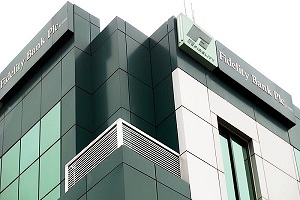Fidelity Bank Plc bolstered after-tax profit by 7.08% in its nine months of financial year 2020 results amidst hostile operating environment.
In the 9-month of financial year scorecard, profit after tax rose to ₦20.406 billion from ₦19.056 billion in the comparable year in 2019.
In the third quarter of 2020, Fidelity Bank raised profit after tax by 67% to ₦9.103 billion from ₦5.443 billion recorded in the second quarter of the same year.
The bank’s earnings per share came in 6.1% higher to ₦0.70 year on year, which is in line with Chapel Hill Denham’s annualised estimate.
At the topline, gross earnings declined 3.74% to ₦255.03 billion in 9-month of 2020 from ₦161.055 billion in the comparable period in 2019.
The reduction comes as a result of economic lockdowns induced by the outbreak of coronavirus pandemic in the first half of 2020.
On its interest yielding assets, Fidelity Bank Plc recorded about 2% drop in interest income from ₦135.116 billion to ₦132.5 billion.
Analysts attributed this to lower interest rate environment.
Meanwhile, interest expenses dropped faster at 25.24% year on year from ₦76.87 billion to ₦57.469 billion.
The significant reduction in funding sources impacted the result positively as lender’s net interest income rose some 29% year on year to ₦75 billion from ₦58.246 billion in the comparable period.
In its equity note, analysts at Chapel Hill Denham said Fidelity Bank’s net interest income was up 25% in Q3-2020 as a result of 35.0% decrease in interest expense especially on term deposits.
Also, lender was able to reduced its cost by cutting off sizeable amount in terms deposits, dropped 49.6% year on year while debts issued an d other borrowed funds plunged down 15% owing to lower market rates.
However, interest expense on inter-bank borrowing rose considerably as the incessant CBN CRR debits tightened liquidity, forcing the bank to rely heavily on overnight borrowings to meet short-term obligations.
The bank’s cost-to-income ratio improved by 3.0% to 54.4% in Q3-20, on account of a 14.0% decrease in operating cost.
Meanwhile, the decrease in operating income was mostly attributable to significant reduction in rental charges (down 26.9%), travelling and training expenses (down 43.9%) and consultancy fees (down 75.0%).
The downward adjustment in fees on banking transactions by the apex bank continued to exert pressure on the bank’s earnings.
Net fee and commission Income declined 35% year on year to ₦10.1 billion from ₦15.5 billion previously.
On quarter on quarter however, lender raised net fee and commission by 21.5% in Q3 reflecting the impact of the easing of movement restrictions.
Year on year decline in net fee and commission income was due to lower income recorded in ATM charges which dropped 28.9%, account maintenance charges went down 20.4% and commission on travelers’ cheque and foreign bills declined 46.1%.
“We expect the weakness in these income lines to soften as the increased use of digital channels by customers drives faster growth in volume of transactions”, CSL Stockbrokers said.
The bank reported about 10% increase in gross loans in the third quarter, mostly attributable to increased lending to corporate clients as the improvement in economic activities in Q3-20.
However, part of the growth recorded was on account of the adjustment in the bank’s exchange rate from ₦364.7 to ₦385.8 per dollar, as foreign currency loans constitute about 41.6% of the loan book.
Despite tightened economic environment, deposits jerked up by 6.6% quarter on quarter, which Chapel Hill Denham said it’s mostly due to improvement in current and savings accounts (CASA) deposits.
Lender’s current and savings deposit were up by 15.9% and 39.9% year to date respectively, as the bank strives to remedy its concentrated deposits.
Notably, analysts at Chapel Hill Denham explained that as at first half of 2020, the 20 largest depositors accounted for 22% of total deposits.
This led to a 50 basis point year to date improvement in Fidelity’s CASA ratio to 59.1% as at 9-month of financial year 2020.
Fidelity bank increase loans to customers by 12.91% from ₦1.272 trillion from ₦1.126 trillion at the beginning of the year.
This helped Fidelity Bank Plc.’s total assets growth of 21.81% to ₦2.575 trillion from ₦2.114 trillion at the beginning of the accounting year.
Source: MarketForces Africa














